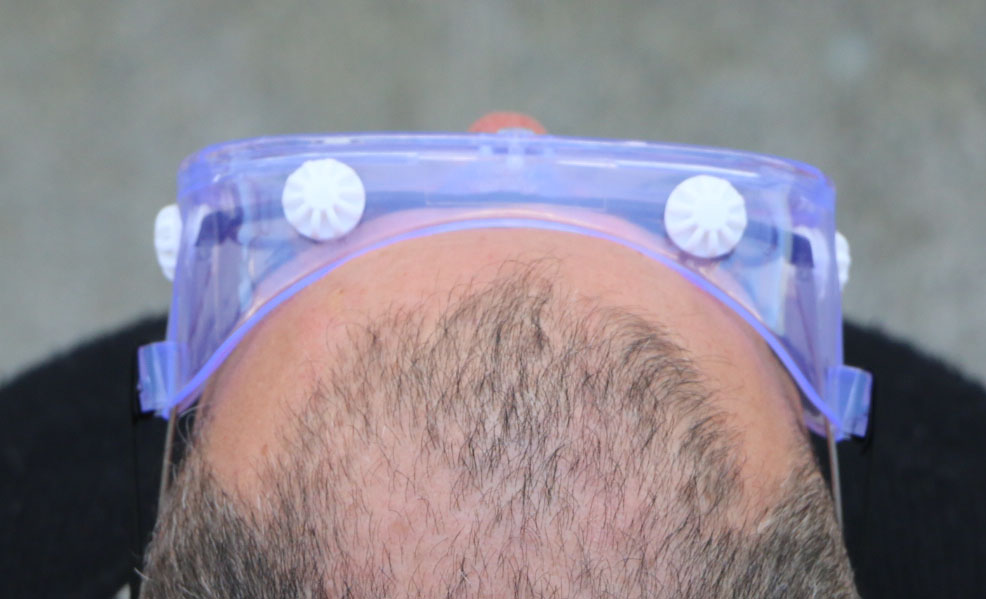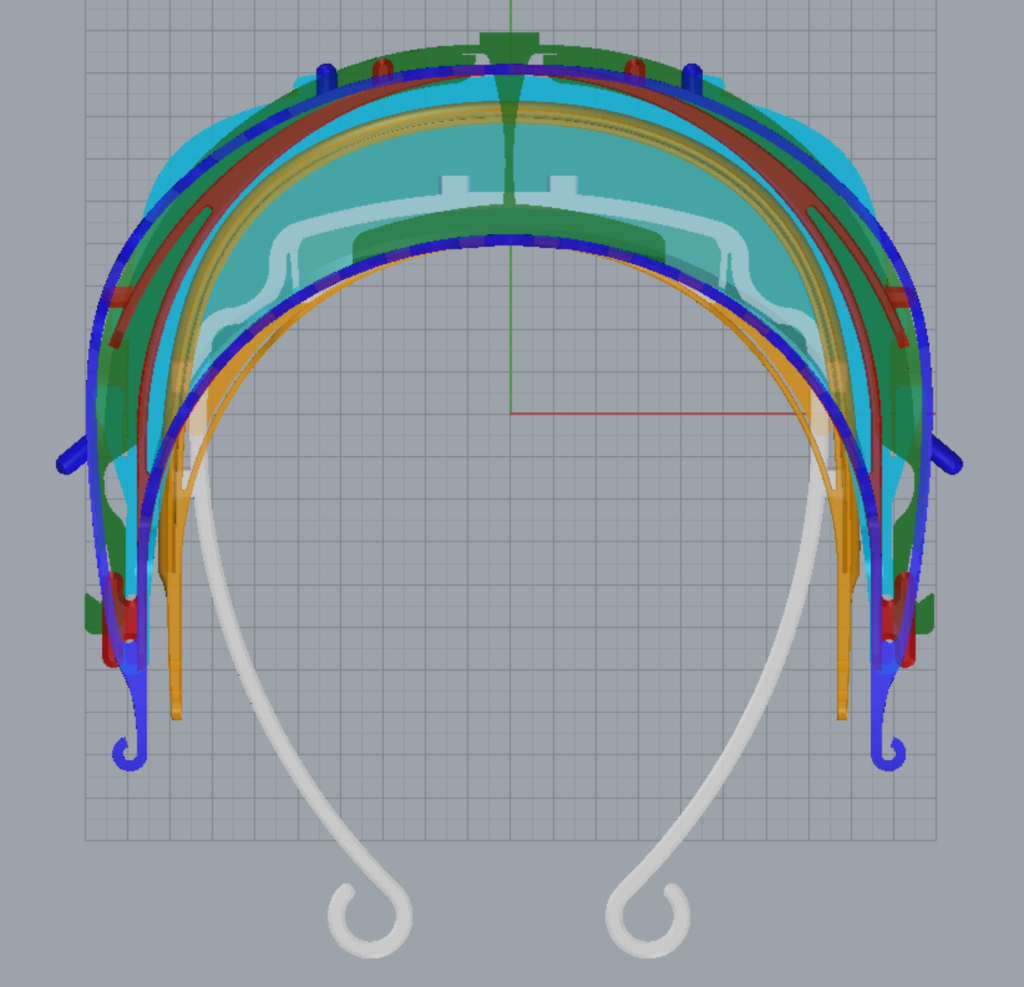At this point in time probably every body in the world has heard about the lack of protective equipment for health care workers dealing with the Covid-19 pandemic.
Many of us have been feeling that strong and impulsive need to help, to contribute somehow. For designers and makers all over the world the attention was immediately directed to the capabilities that technologies like 3D printing can have to assists in the production of Personal Protective Equipment (PPE), and the first one to be built and interesting one has been face shields.
It took only days for groups of makers to get organised in different parts of the world, all united by the most prominent figures/communities of the additive manufacturing environment. As you read this lines thousands of PPE are being produced, which is really amazing.
Designers and makers alike jumped immediately to find solutions as fast as possible and start producing. But very few are trained to stop, think and follow a proper process; the urgency was and still is dire in many places. How do you balance certainty in building the proper product and delivering as soon as possible when the urgency is so extreme?
I felt the same urge especially when the Canadian Minister of Innovation and Science sent a letter requesting help from all institutions. But I decided to do a bit of research before jumping into the frenzy of iteration and “testing”.
One of the areas of expertise in the program where I teach is precisely PPE, and even though is not my field I have learned the crucial importance of standards and regulations. We are talking about protecting people from extreme dangerous situations; we need to be sure of actually doing that and not creating a greater problem.
I manage to find Canadian National Standard CSAZ94.3:20 “Eye and face protectors”.
Among excruciating detailed explanations of diverse testing in lab for things such as light refraction through the shield, some more basic but also essential facts are pretty easy to comply with and I think have been not widely consider, just two of them:
- Face shields can only be worn with glasses or goggles under it. In the image below you can see the maximum size of goggles and the area the face shield should be able to cover.
- Impact testing is not necessary has it is worn with goggles and this are the ones withstanding the force, face shields are flexible.

Something that is not stated in this particular standard but it is practice in the health care industry is sterilisation, which can be pretty rough with materials, so material selection is important as well as porosity to avoid particles or, yes viruses, to find spots where to attach.
On top of that I gave myself the duty to follow in social media to several nurses, beside the one in my family, commonly mentioned two other main things:
- Covering from ear to ear is a must; a too narrow shield won’t do a proper job.
- Comfort, after 8 or 10 hours of wearing PPE, with the movement and sweat the skin pays a heavy prize.
Below you can see a comparison of some of the most commonly found frames for face shields.

In red you can see what probably is the most famous one, originally made by the guys at Prusa in the Czech Republic. It is a great design but it does not cover enough to host the goggles underneath, and not going far back enough to cover close to the ears. An extreme case is the white one, the 3DVerkstan, that sit extremely close to the forehead and because of the geometry probably puts lots of pressure on the user’s head (I have no info about is pure speculation). The yellow one it’s been made ubiquitous in Spain by the Coronavirusmakers group, my cousin in Spain has use it and she likes it, light and comfortable she told me.
The dark blue was one I made based on Prusa’s and thinking on the things I had learned: enough to cover the goggles and from ear to ear. I tested printing it together with the Prusa and the green one made by Tinkerine, a local company in Metro Vancouver, BC. All of them took more than one hour and I could only fit one of them in the school’s printers. Which means that if you want to make hundreds you either get as many printers as you can or sit beside you printer so each hour you can put another one to print. None of these options seem very efficient, then reality strikes, 3D printing is a wonderful technology but it has its limits.
So design should kick in and make the best use of the tools available. Tinkerine came up with a frameless design, similar to certified face shields already in use, it gives support with a thick foam block cut in laser, the 3D printed parts are just a few and small which allows you to fit many in just one printer, making the process much faster and efficient. Nevertheless, so much foam touching one’s forehead may get too hot, I have seen the use of non-woven textiles covering he foam to ease this problem. Tinkerine just got their face shield certified by Health Canada and are producing several thousands in the next few days, pretty amazing!
One last issue is material procurement, getting all the material needed for your production, specially in times where things are scarce is a big issue. PETG the main material the maker community is using for the shields is getting harder and harder to find.
Based on all the previous I made my own design of frameless face shield. It is basically an adjustable headband, and the shield is fitted into two 3D printed parts that can also slide back and forward making adjustability the main feature of this design. The shield is quite wide so covers easily from ear to ear. Several 3D printed parts can be fitted in one printer, making the process and the use of time much more efficient.

I am not trying to say one design is better than the other, and that you should use one or the other. First thing is that every country has different standards and regulations; it should be the first thing to check. Then the user, many makers asked for feedback to nurses and doctors, but I just wonder what testing protocol they followed and how rigorous it was to properly assess the quality of the design. Humans are incredibly adaptable (and many will avoid offending you), and not always will even notice if what they see as a good design actually is.
One last call for caution, there are makers and other non-expert groups proposing methods to build ventilators with 3D printers and arduino boards, that I think goes well beyond the capacity of well intended makers and even properly trained designers. Ventilators are complex and extreme care needs to be used not to cause a greater damage to the patient. Ventilators need to be designed, build and tested by teams of diverse experts. I know the need is great and the urgency pushes us to try. This should be a greater lesson on human made complex systems, resiliency, cooperation and even on the economy, how all plays a role when disaster strikes.
All experiences to learn from, with the hopes that for the next time, (because sadly, most surely, there will be a next one sooner or latter) we will do an even better job.